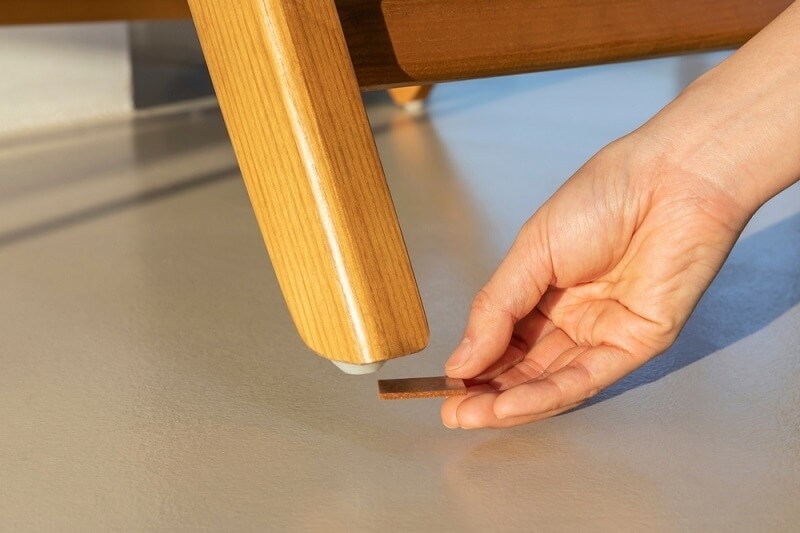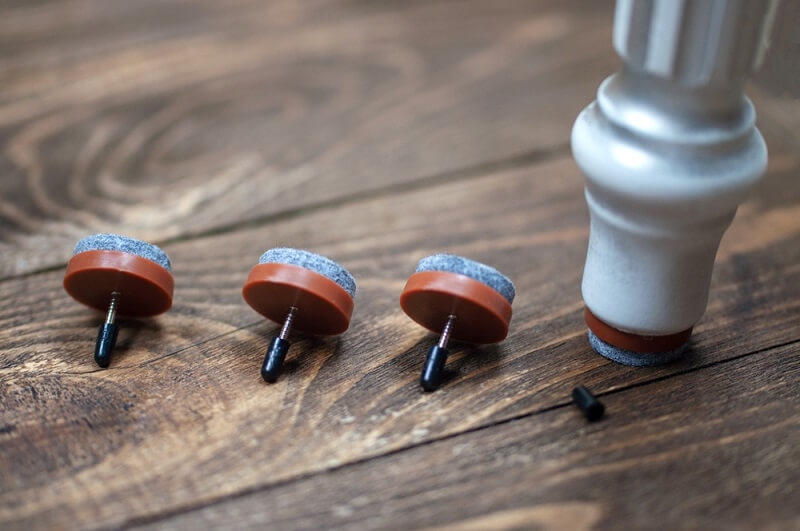
Furniture brings elegance, warmth, character, and style to your home, but nothing tarnishes those appealing features like unsightly scratches. Whether it’s your favorite coffee table or a set that has special meaning to you, furniture knocks and scratches can happen before we even realize it. Therefore, knowing how to prevent scratches on your furniture is a crucial skill for maintaining your home’s polished and well-maintained appearance. From preventative styles for protecting wood furniture to a repair guide to help fix the scratches on your dining room table, a little protection and maintenance go a long way.
Scratches will diminish your furniture's aesthetic appeal, but they can also create a larger systemic failure due to underlying physical property damage. In many cases, scratches can be caused by pets, moving furniture, or improper cleaning methods. This guide will not only help you understand the issues but also provide steps to preserve your furniture, including how to repair a scratched table, keep your furniture pet-proof, and maintain a healthy, clean furnished home interior.
Before discussing ways to avoid scratches on furniture, let’s determine what causes scratches in the first place. The primary offenders are:
Knowing these categories can help you foster a condition that confirms your goal of protecting wood furniture and making it last.
The best solution to dealing with scratches is to prevent them from happening in the first place. Here are some reasonable ways to prevent furniture from scratching during everyday use.
Place felt pads or silicone bumpers on the bottom of the legs of your tables, chairs, and décor pieces. These pads will eliminate friction or minimize surface abrasion to prevent scratches, especially if placed on wooden or laminate flooring.
Always lift rather than slide objects, even if it's a dish, vase, or lamp; sliding will contribute to minor scratches that, over time, will dull the surface of your furniture.
Cover all wooden surfaces with decorative cloths, table runners, or placemats to enhance the ambiance. These lay a barrier against hot things, liquids, and friction from usage.
Dust and dirt have an abrasive property. Use a soft microfiber cloth and a non-aggressive wood cleaner once a week to keep your surfaces smooth. When cleaning your surfaces, it is essential to clean with the grain, not against it.
If you have pet companions, you are aware of the struggle. Cats love to scratch things, and dogs' nails can leave marks without hesitation. Here's how to make pet-proofing work with furniture.
This practice reduces the likelihood of points leaving an unwanted mark.
Place a scratching post or scratching mat near the furniture you own. Cats prefer to scratch in a designated area as long as they have access to it and it is attractive to them.
To limit scratches from pets, cover sofas and chairs with a washable cover. Not only will this protect your favorite chair and sofa, but it also provides style.
Self-adhesive films or cavaler. Rhims can help prevent claw marks on wood furniture and remain discreet.
Pet-proofing furniture is not only key in protecting your wood furniture but also enhances your home with an environment designed for your pets to roam free, without consequence.

Good furniture always maintains a pristine appearance and requires effort to keep it that way. Lifestyle changes are the common-sense way to adopt practices that prolong your furniture's appearance for years to come:
Little changes will increase the lifespan of your furniture.
Protecting furniture requires altering not just for physical contact, but also includes environmental elements like sunlight and moisture.
After applying market-grade furniture polish or wax, a barrier will exist to resist scratches. In addition, many beeswax products nourish and replenish the wood while providing shine.
UV rays dry out wood, causing it to crack and the finish color to fade. When possible, orient the furniture away from sunlight, or use blinds or curtains to diffuse the sunlight.
Prolonged exposure to vents or fireplaces can expose furniture to extreme temperature changes that may weaken finishes and make the wood more susceptible to damage.
To protect surfaces from damage, including wood flooring and furniture, rugs and or furniture pads can reduce friction when you move tables or sofas over the floor.
If these practices become habit, then you will reduce damage and increase the likelihood of maintaining attractive conditions in your interiors for years and years to come.
Even the best precautions can result in surface damage to wood furniture, scratched tables, or other furniture pieces. This scratch repair guide will explain how to repair a scratched table and restore its natural beauty when it occurs.
The benefits of learning to fix a scratched table really do pay off. It saves money while extending the life of your furniture. If well cared for, you can have timeless pieces of furniture heritage.
As in many things, consistency is essential to avoiding scratches. Create ongoing habits to maintain the condition of your furniture:
Being proactive means the home stays stylish without unsightly damage for the long haul.
Below are some trusted items and solutions that every homeowner can use.
If you combine these products with regular maintenance, you will significantly reduce the chance of damage.
Knowing what not to do is just as important as knowing what to do.
Putting in the extra work to prevent scratches to your furniture means more than just keeping your furniture looking good. You’re also adding real, quantifiable value to your living space. Keeping your furniture regularly maintained:
In the end, protecting your furniture has to do with protecting your investment and ensuring every room in your home is useful and aesthetically pleasing.
When you think about scratch prevention, it is not just about keeping things aesthetically good-looking, but also about preserving the craftsmanship and value. By taking the preventative measures and acting before issues arise, you are extending the life and beauty of your home’s favorite items. Once you understand some simple preventative measures, upkeep strategies, and repair/remediation strategies to fix scratched or damaged furniture, together you will maintain wood furniture (or other furniture in your home) according to your style or preferences.
In fact, when you care for and have awareness of your items (your furniture) in the home, your furniture can look just as beautiful as the first day you had it, and reflect your comfort and elegance to have pride in your home.
This content was created by AI